
25 minute read
Agriculture
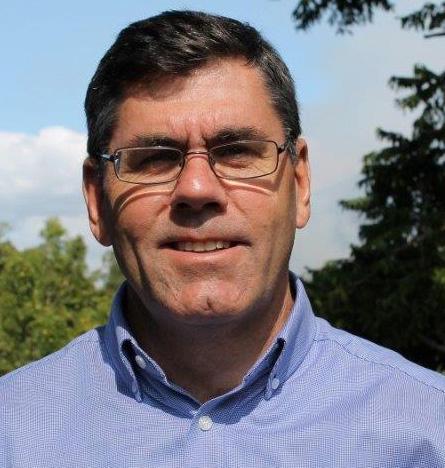
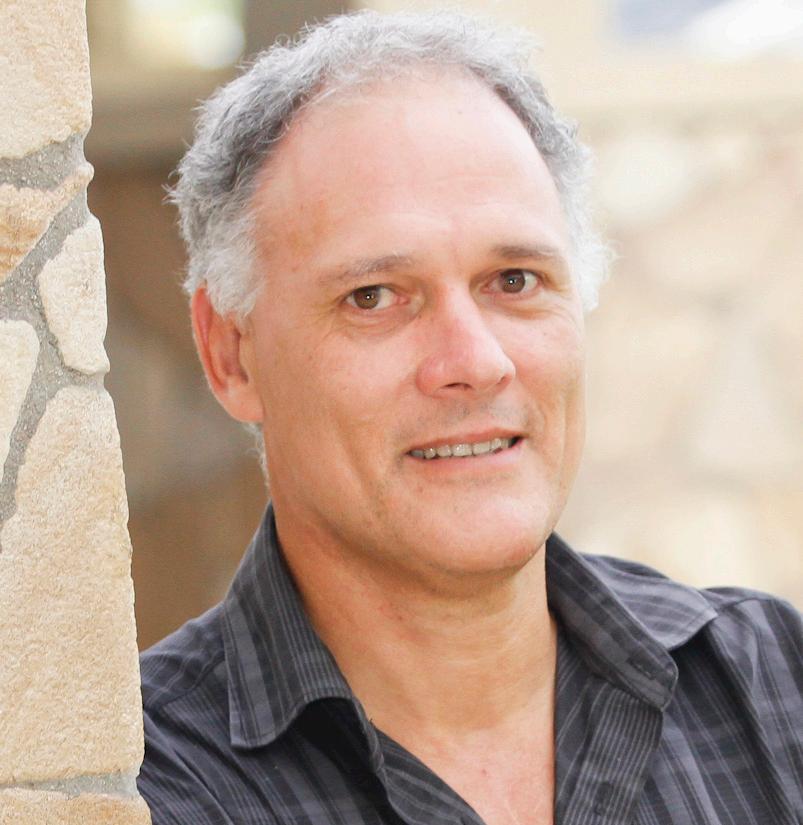
Advertisement



Agriculture MINISTERIAL BRIEFING NOTE
ORGANISATION
DELEGATION CONTACT
DELEGATES ATTENDING
DELEGATE ISSUES
WEBSITE LINKS
ATTACHMENTS Cairns TNQ Convoy to CapitalQ
Advance Cairns, Tourism Tropical North Queensland and Cairns Chamber of Commerce are leading the region’s largest ever business delegation to Brisbane. The delegation includes more than 50 business leaders over a two-day period (February 18-19), representing 12 key business sectors to meet with State MPs and attend the Speaker’s Cocktail Reception.
Further information: Nick Trompf, Executive Chairman Advance Cairns E: nicktrompf@advancecairns.com | M: 0412 786 719
Agriculture:
Jeffrey Schrale
1. Jeffrey Schrale, Regional Manager Far North Queensland ANZ 2. Mike Barry, CEO MSF Sugar 3. Cameron Mackay, CEO Mackay Estates 4. Dr Allan Dale, Professor of Tropical Regional Development James Cook University 5. Stewart Christie, CEO Terrain NRM
Attached are bios on each delegate.
Agriculture issues to discuss:
• Land Use and Agriculture • Reef Regulations • Dams and Water Security • Dairy Industry Crisis Relief
Attached are briefing papers on each issue.
• Attendee biographies • Briefing papers


Jeff grew up in Coffs Harbour on a 250 cow dairy farm and then did his degree and post graduate diploma in education at the University of QLD.
Following university Jeff worked as a school teacher based in Hughenden, followed by a return to manage and ultimately lease the family dairy farm. He then spent almost 10 years working for firms consulting to family farms before entering the Banking Industry as an Agribusiness/Commercial Manager with CBA in Muswellbrook.
He has now spent 8 years working for ANZ and has progressed from the role of a Relationship manager through to State Agribusiness manager and more recently Regional Executive for Far North Queensland.
Jeff is a father of 4 girls and lives on the Atherton Tablelands where he has a small hobby farm near Malanda.
MIKE BARRY CEO MSF SUGAR
Mike was appointed to the position of CEO in February 2008. Before he joined MSF Sugar, Mike was previously managing director of the private equity-owned Hudson Building Supplies, one of Australia’s largest building supply companies.
For the ten years prior to holding that position, Mr Barry held a number of senior management roles within Boral Limited, the most recent being Regional General Manager for Boral’s Construction Materials business in Western Australia and South Australia, where he had responsibility for the company’s concrete, quarries, transport, pre-cast concrete, asphalt and mining activities in those regions.

CAMERON MACKAY CEO MACKAY ESTATES Cameron is a third generation farmer from Tully, North Queensland and together with his two brothers and two cousins, operate Banana farms throughout Queensland.
The Mackays brand has been growing Bananas for 73 years in Queensland. In the past 20 years the business has moved into marketing Bananas and currently sells one third of Australia’s Bananas.
Cameron has worked in the Banana business for 23 years and had involvement in all aspects of operations. During this time he also served on the board of Australia Banana Growers Council for 12 years and was Chairman for 2 ½ of those years.
He has also maintained a strong interest in Research and Development in the Banana industry over the course of his career.
Allan is a Professor of Tropical Regional Development at The Cairns Institute, James Cook University. He has a strong interest in integrated governance, with a particular focus across the tropical world, northern Australia and the Great Barrier Reef .
He has both extensive research and policy expertise in building strong governance systems, but particularly in regional, rural and social development and natural resource management.
Allan was previously the Chair of RDA FNQ&TS, CEO of Terrain NRM and before that was responsible for natural resource policy in Queensland. He is also now the Chief Scientist for the Cooperative Research Centre for Developing Northern Australia.
Allan has a long research background in analysing complex and multi-level governance system and is an Honorary Professorial Research Fellow with Charles Darwin University’s Northern Institute.

STEWART C HRISTIE CEO TERRAIN NRM
Stewart is the CEO of Terrain NRM, an independent, not-for-profit community-based environmental management organisation that has been operating throughout Tropical North Queensland since 2003.
Terrain NRM has 40 staff and initiates collaborative, innovative and forward-looking solutions to the important natural resource management and economic challenges facing our region.
Stewart has extensive experience in economic development, the planning and delivery of large infrastructure projects and leading for-profit and not for profit organisations that create a positive triple bottom-line impact for our region.
RENEWABLE ENERGY PROJECTS COMPLEMENT THE MORE TRADITIONAL AGRICULTURE SECTOR ON THE ATHERTON TABLELAND PHOTO CREDIT: SUE WELLWOOD PHOTOGRAPHY
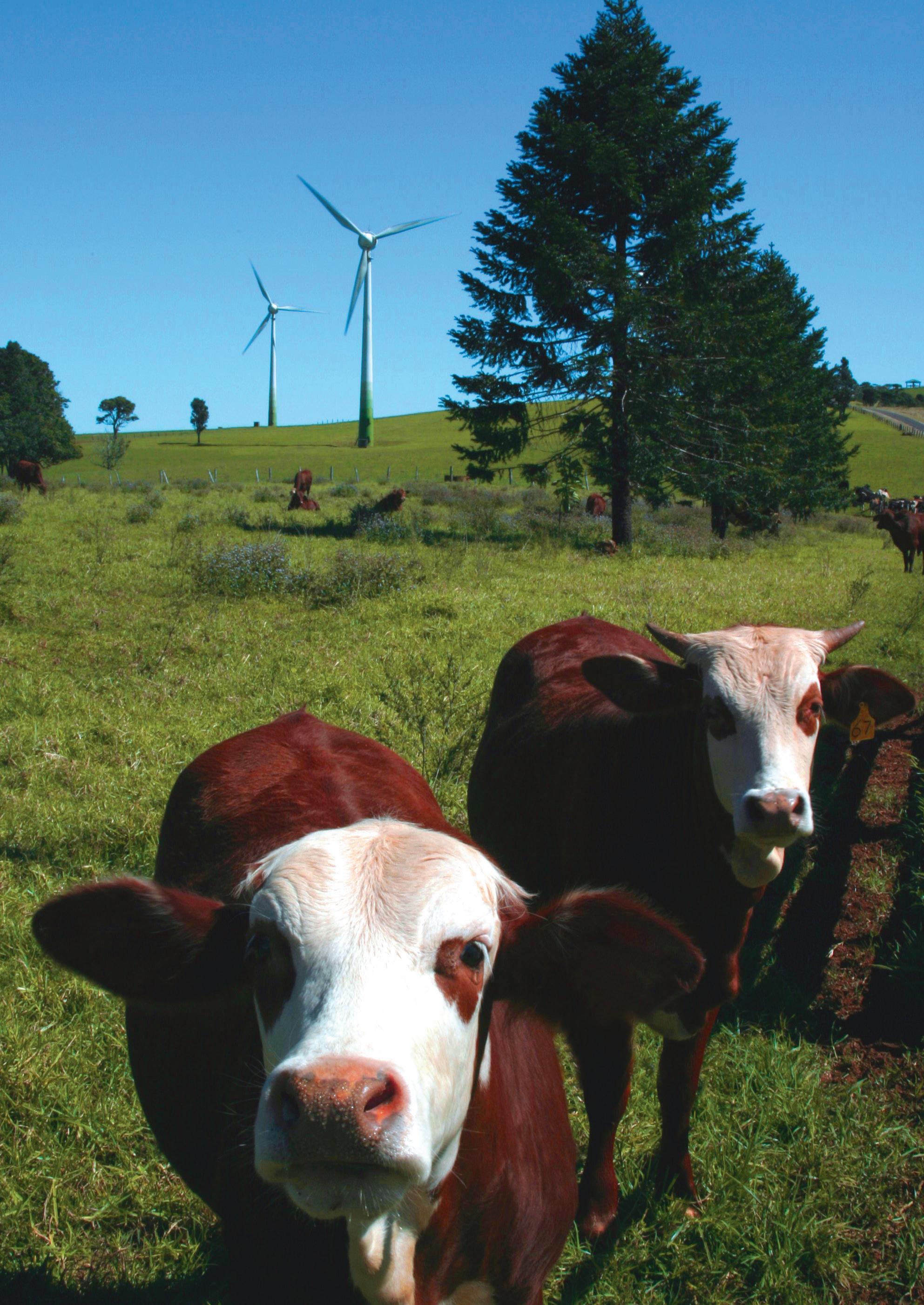
COUNCIL: ALL TNQ STATE ELECTORATE: ALL TNQ FEDERAL ELECTORATES: LEICHHARDT, KENNEDY INDUSTRY DEVELOPMENT
LAND USE AND AGRICULTURE
BRIEFING NOTE SUMMARY
• To reduce the uncertainty facing investors in agricultural development, improved strategic land use planning and mechanisms for tenure resolution are required. To facilitate this process, it is proposed that Strategic Agricultural Development Areas be prioritised and established.
• This approach would be complimented by the creation of an Office of the Coordinator General in far northern Queensland. The Office is required to coordinate more effective strategic regional land use planning and major development approvals, supported by increased State investment to process subsidiary tenure resolution efforts.
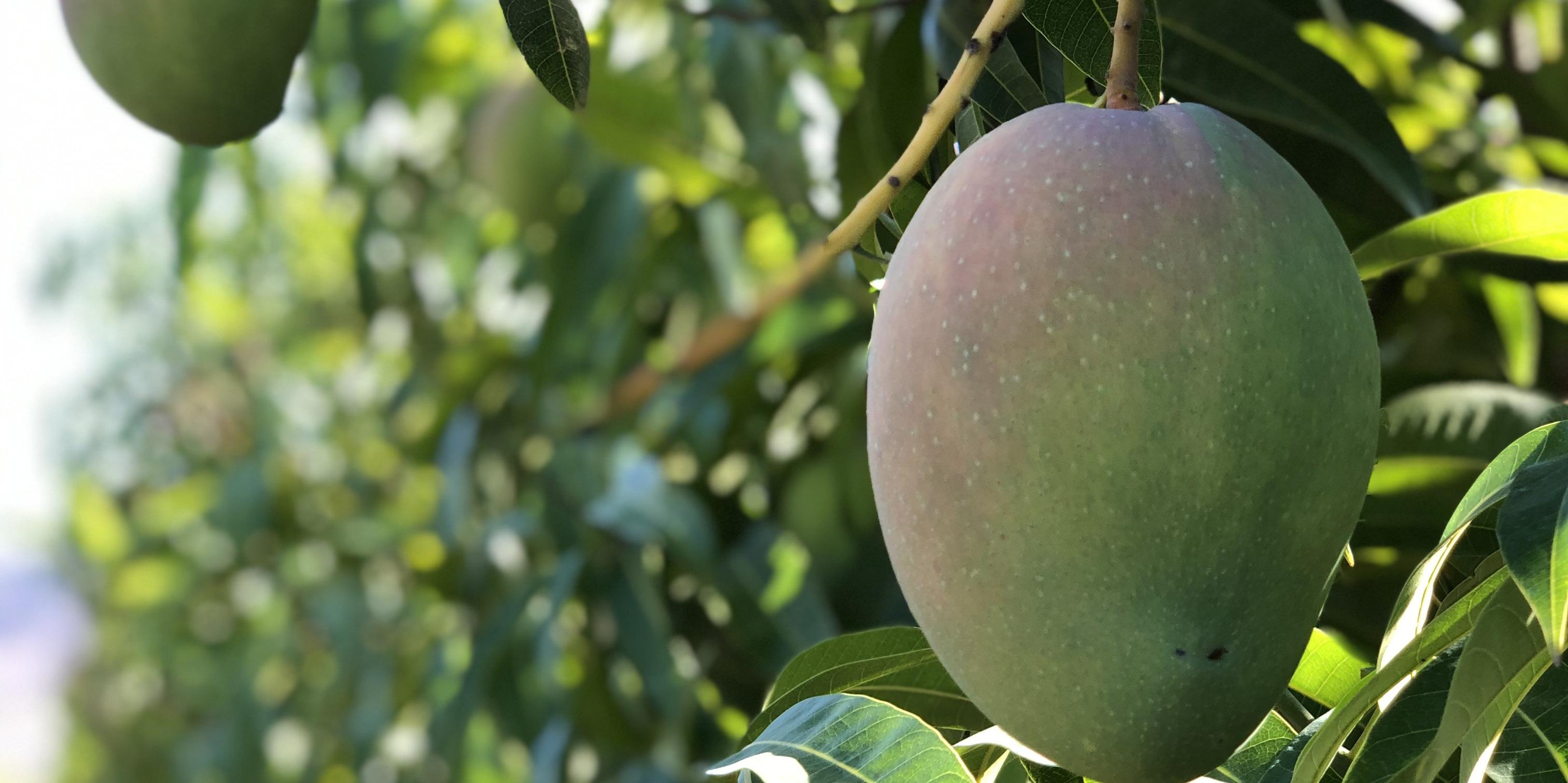
THE ISSUE A CSIRO and James Cook University (JCU) report into land tenure issues in northern Australia identified key actions required to ensure land tenure arrangements facilitate rather than hinder investment in the region. The report identified that the majority of land in northern Australia is crown-owned (75.4%), two-thirds of which is pastoral leasehold. Another 18.5% is Indigenous land and privatelyowned land accounts for 6.1%. However, Indigenous land interests cover an estimated 94% of northern Australia and there are limited arrangements to support Traditional Owners in leading development opportunities within these various tenures. In the State of Queensland, an estimated 65% of land is leasehold, with term leases for grazing and agriculture the principal arrangement. High value agriculture is permitted by the Native Title Act (1993) on term leases subject to notices, which does not require an Indigenous Land Use Agreement (ILUA) or consent. In 1996 the Native Title Act confirmed existing freehold and perpetual leases extinguished native title, however it is the State’s view this can only be achieved if native title is
2020 STATE ELECTION PRIORITIES FOR TNQ extinguished either by agreement (ILUA) or order of the Court. Many pastoral tenures therefore have quite restrictive requirements that need careful negotiation for development. Native title issues in particular are sensitive as the land holder cannot achieve more secure tenure unless native title is surrendered or extinguished. Many others are impacted by the Queensland Vegetation Management Act (1999), which was amended in 2018 to ban broad-scale clearing of remnant vegetation for agriculture. The reduced certainty regarding land use is impacting both agricultural and environmental management investment as many leaseholder and financial institutions require a more secure form of tenure to underpin the huge capital investment required for high value agriculture. Combined with land tenure uncertainty, to improve agricultural investment in Tropical North Queensland (TNQ) an opportunity exists to streamline development approvals.
BACKGROUND Productive agricultural land is an irreplaceable asset for current and future generations and must be effectively identified, managed and preserved through improved land use planning
and project assessment frameworks. While land ownership in Australia is governed by common and statutory laws, in the context of northern Queensland a lack of strategic planning and land tenure complexities have frustrated new investment. In Tropical North Queensland, efforts to reduce barriers to agricultural investment could be pursued in four distinct ways: 1. The prioritisation of areas where the State would strongly support agricultural development; 2. Streamlining development approvals and regulations at the Federal, State and local level through a single point-of-contact permanently based in the region; 3. Making administrative and legislative improvements to land tenure legislation to reduce barriers to investment, taking into consideration the requirements of the Queensland Vegetation Management Act (1999); and 4. Taking action to improve the effectiveness of land and resource planning to reduce conflict between potential investors and land holders.

NEXT STEPS Just as there are State Development Area’s (SDA’s) to promote economic development in Queensland, to reduce the uncertainty facing investors in agricultural development, it is proposed that a framework for prioritised Strategic Agricultural Development Areas be developed across TNQ. Similar in nature to a State Development Area, this would mean that in areas suitable for agricultural production, a single authority would coordinate decisions regarding • Land use planning and approvals; • Vegetation management planning and approvals; • Native title negotiations; • Environmental impact studies and approvals; • Water allocations; and • Trunk infrastructure requirements. The process would be managed through the creation of an Office of the Coordinator General in far northern Queensland, which would be tasked with coordinating strategic regional land use plans and major development approvals, supported by associated tenure resolution efforts.
OUR RECOMMENDATION
• That the State Government reduce uncertainty regarding land use and land tenure issues by establishing a framework for Strategic Agricultural Development Areas in Queensland.
• That the State Government establish an Office of the Coordinator General in far northern Queensland based in Cairns to effectively coordinate strategic regional land use planning and major development approvals, supported by associated tenure resolution efforts.
COUNCIL: ALL TNQ STATE ELECTORATE: ALL TNQ FEDERAL ELECTORATES: LEICHHARDT, KENNEDY INDUSTRY DEVELOPMENT
REEF REGULATIONS
BRIEFING NOTE SUMMARY
• Polluted water is one of the biggest threats to the Great Barrier Reef. There has been significant investment by State and Federal governments since 2008 to reduce this threat.
• Progress is being made towards water quality improvement targets however modelling concludes that these approaches will be insufficient to meet the targets.
• The next wave of innovative solutions that addresses these challenges is needed. New approaches are being trialled in the Tully, Johnstone, Russell/Mulgrave and the Bowen, Broken and Bogie (BBB) River (Burdekin region) catchments.
• To maintain this momentum, capitalise on current interest and further expand the rollout of promising practices, further support and investment is required.

THE ISSUE Since 2008, targeted investment by the Queensland and Commonwealth Governments in various programs has reduced the nitrogen, sediment and pesticides entering waterways that flow into the Great Barrier Reef. This investment has been focussed on providing support to individual landholders, considering each farm separately, and establishing water quality monitoring at the end of catchments. The Queensland Government Environmental Protection (Great Barrier Reef Protection Measures) and Other Legislation Amendment Act 2019 was recently introduced to set a minimum standard to reduce the amount of nutrients, pesticides and sediment entering the Great Barrier Reef lagoon. The Act was implemented to regulate a minimum industry standard and encourage landholders that have not yet adopted Best Management Practices (BMP) to move toward BMP standards. Many commercial growers have already adopted industry BMP and believe that they are doing everything they can to improve water quality without impacting the financial viability of their businesses. However, while many landholders have adopted the straightforward practice changes that have a clear business and water quality improvement benefit, the 2016 Great Barrier Reef Water Science Taskforce
2020 STATE ELECTION PRIORITIES FOR TNQ found that even if 100% of farmers adopted currently accepted best management practices, it would be unlikely that water quality targets would be met. Trialling new approaches to complement best management practices is recommended by the taskforce. Recently, many sugarcane and banana growers have questionned the science that underpins the legislation, particularly the end-of-catchment water quality modelling that attributes pollution loads to individual catchments and the agricultural sector.
BACKGROUND To continue to improve water quality and simultaneously support landholder’s increased profitability, innovative approaches are needed. Key organisations in the region are working on new ways of increasing the uptake of voluntary adoption of best management practices. The focus is on working collaboratively with farmers to fully understand the local water quality issues, and in partnership with scientists and technicians, support farmers themselves to be the drivers of innovative, transformative solutions. With this new approach, trust and confidence is being built between landholders, community and scientists to collaboratively address the more complex and integrated challenges.
The National Environmental Science Program (NESP) has developed a project with leading commercial farmers that will result in assurances that water quality measurements are accurate and targeted. The project has now developed beyond its original intention into a grower-driven, strategically-placed, real-time monitoring system which, most importantly, has the input from the landholder as well as the scientific skill and mentoring of the researchers. Growers within the project have been analysing the results for several years and identifying water quality hotspots within their sub-catchment. Results have identified areas where farmers need to do more to manage and improve water quality leaving their farms. Results have also identified local water quality issues previously attributed to canefarmers that appear more related to other land uses and their impacts on local water quality. Properly attributing water quality issues to the correct cause with local, evidence-based research, provides growers with the information needed to address the correct challenges. Another example of innovation is the Terrain NRM Major Integrated Project (MIP), supported by $15 million of funding through the Office of the Great Barrier Reef, which involves 215 farmers in the Tully and Johnstone River catchments. The focus and benefits of the project are: • trialling new cost-effective water treatment and catchment repair systems such as bioreactors, wetlands and high-efficiency sediment basins that are removing high amounts of nitrogen and sedminent;
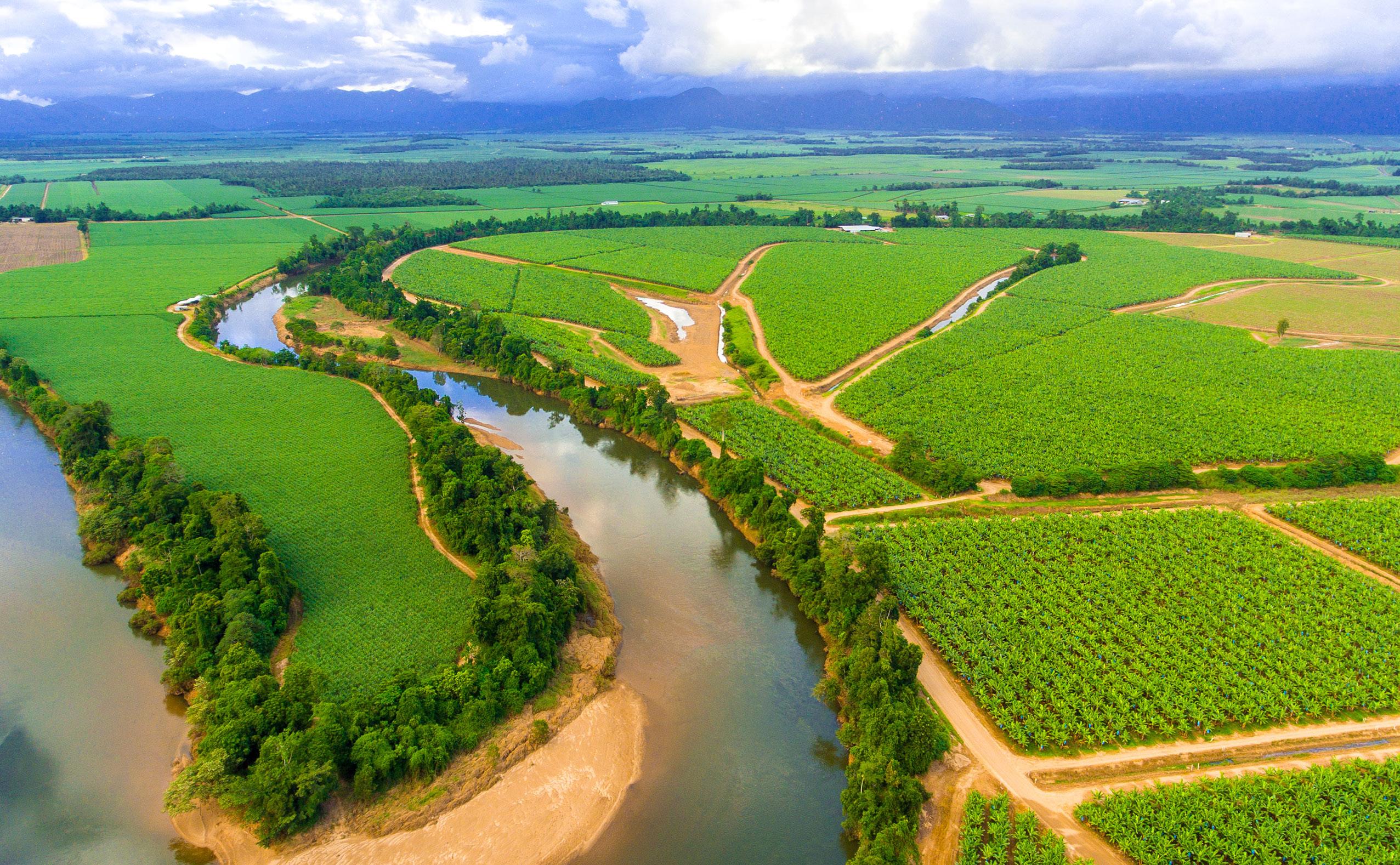
• providing water quality monitoring and data at farms rather than at the end of catchment, which is reducing costs, improving profitability and water quality and re-building confidence in science; • supporting uptake of promising new farm practices and creating peer-to-peer and cross-industry learning/support; and • developing an innovative, market-based solution (Reef Credits) that de-risks and provides an income stream for landholders to make and sustain changes that improve water quality and is being proven through 21 pilot projects.
NEXT STEPS There are hundreds of kilometres of drains throughout the agricultural areas of the Wet Tropics that have the potential to be cost effectively repurposed to remove nutrients. Targeted real-time monitoring and the adoption of new technologies has highlighted points of potential intervention in the pollution cycle. The NESP project learnings need increased resourcing to encourage wider adoption of changed farming practices while the MIP should be further expanded. In addition, the program should include analysis of flood plume characteristics of individual catchments, which may eventually lead to catchment based onground practices. Supporting these approaches deployed on the ground will accelerate the rate of water quality improvement, and support improved productivity and profitability of landholders will increase.
OUR RECOMMENDATION
To enable the Queensland Government, landholders and communities to be able to demonstrate and fully realise the impact of current investments for existing and other catchments, it is recommended that:
• $5 million be allocated towards expanding the NESP program and extension resources to encourage onfarm adoption of key learnings;
• $15 million be allocated to extend the Wet Tropics MIP to June 2025; and
• in collaboration with the Office of the Great Barrier Reef, Great Barrier Reef Foundation, Terrain NRM and NESP researchers, a pilot program be developed to trial the re-purposing of sections of the drainage network in the Wet Tropics.
COUNCIL: CAIRNS, MAREEBA, ETHERIDGE, COOK, TABLELANDS STATE ELECTORATE: CAIRNS, BARRON RIVER, HILL, TRAEGER FEDERAL ELECTORATES: LEICHHARDT, KENNEDY ENABLING INFRASTRUCTURE
DAMS AND WATER SECURITY
BRIEFING NOTE SUMMARY
• The ability to supply increased demand for fresh Australian food from North Queensland is at risk due to a lack of long term water implementation strategy
• To cater for growing demand fresh foods, five significant water supply and infrastructure projects are considered essential enablers for the region: Nullinga Dam, North Johnstone River Diversion Scheme, Lakeland Irrigation Area Project, Gilbert River Irrigation Scheme and Tablelands Irrigation Project.
• All five projects require bilateral commitment and shared investment (split 50:50) to facilitate environmental approvals and progress to construction stage.
• In 2020-2021, a $7 million investment is required to progress the North Johnstone River Diversion Scheme business case.
• Nullinga Dam is the most advanced project and requires bilateral investment of $854 million to unlock additional agricultural production worth more than $200 million per annum while supporting the growing urban water needs of the region.

THE ISSUE Tropical North Queensland (TNQ) has seen sustained population growth during the past 30 years underpinned by expansion of industries including agriculture, tourism, fisheries, education, health and retail. At the forefront of agricultural growth has been the Atherton Tablelands, driven by the Mareeba Dimbulah Water Supply Scheme (MDWSS) with rapid expansion in high value crops such as avocados, bananas, berries and sugarcane. Water is now 100% allocated and 80% used, with purchase prices rising more than threefold since 2011, peaking at $4000ML. To address high prices and supply issues on the Tablelands, a short term and long term implement strategy needs to be agreed and acted upon. The short term strategy requires efficiency improvement in the current MDWSS and the construction of the North Johnstone River Diversion Scheme. These projects need to be fast-tracked to construction. During 2019 the proposed long –term solution for the region, Nullinga Dam was shelved as not meeting the current economic criteria. We believed that the detailed business case did not include all the relevant information. This needs to be re-assessed as it is the only long term solution for the region to meet the projected long term growth for water in the region. In addition, agriculture in areas such as the District of Lakeland and Etheridge Shire have potential to expand rapidly with high value crops such as bananas, grains, cotton and watermelons proving feasible. Water security has been a concern for a number of years and is now limiting supply in both regions.
2020 STATE ELECTION PRIORITIES FOR TNQ Agricultural exports are vital to Tropical North Queensland (TNQ) with the industry sector output currently valued at $2.8 billion, constrained mainly by factors such as irrigation and access to market. Recent trade deals secured with China, Japan, Korea and Indonesia present new market access opportunities, with Cairns International Airport providing direct air access to these markets from northern Australia where agricultural exports underpin sustainable tourism flights. Urban demand also continues to increase with Cairns’ population growth averaging 1.4% per annum. Combined with an estimated three million tourists visiting TNQ annually, to ensure the growing needs of the region can be met an effective and multi-faceted water supply strategy is required. Five significant water supply and infrastructure projects are considered essential enablers for the region: • Nullinga Dam • North Johnstone River Diversion Scheme • Lakeland Irrigation Area Project • Gilbert River Irrigation Scheme • Tablelands Irrigation Project
BACKGROUND On the back of record drought periods in Australia, water security and food security have become priority national policy issues, leading to controversial decisions around water allocations and infrastructure. In recognition of this, in 2019 the Federal Government expanded the National Water Infrastructure Development Fund by $500 million to more than $1 billion, adding to the existing $2 billion for the National Water Infrastructure Loan Facility program.
In strengthening the role of northern Australia as a food bowl, substantial feasibility work has progressed in the past three years to explore new agricultural development opportunities. With many of these studies now coming to a close, there are clear priorities for progressing environmental impact and construction activities and a coordinated approach to development is required. NULLINGA DAM AND NORTH JOHNSTONE RIVER DIVERSION SCHEME: The Queensland Government, through Building Queensland, has released a detailed business case showing costs for a 74,000ML stand-alone dam at $1.068 billion. The project will require shared State and Federal investment of $854 million on top of industry contributions of $213 million (based on $2900ML price). A Queensland Department of Agriculture and Fisheries study showed agricultural output on the Tablelands grew 30% in four years to $552 million. Nullinga Dam would unlock additional agricultural production worth around $200 million per annum. The Queensland ALP Government has announced it would ‘protect’ the proposed dam site but would investigate alternative water supply solutions such as the North Johnstone River diversion scheme in preference to Nullinga Dam. The diversion scheme is considered a viable short-term option to stimulate the economy, delivering up to 50,000 ML with a lower capital cost, and a $7 million investment for a full business case is sought to progress this project. However, longer-term Nullinga Dam will also be required to service the growing agricultural and urban water supply needs of the region. LAKELAND IRRIGATION AREA PROJECT: Regional Development Australia FNQ&TS, through the National Water Infrastructure Development Fund (NWIDF), funded a strategic business case that investigates new water storage options to expand the Lakeland irrigation area. When constructed, the proposed dam will store 200,000ML and irrigate 8,000ha of arable land. The Federal Government has committed an additional $10 million to further develop the business case. The project will require bilateral Government support to facilitate and coordinate the development approval processes for the dam. GILBERT RIVER IRRIGATION SCHEME: Etheridge Shire Council proposes to manage water from the Gilbert Catchment general reserve and facilitate construction of an irrigation scheme along the Gilbert River, distributing water to an estimated 30,000ha of irrigable land. A detailed business case funded by the State Government’s Maturing the Infrastructure Pipeline Program is currently under way and due for completion in March 2020. Preliminary modelling suggests the scheme is economically feasible, and that the area is suited to a range of irrigated crops including grains, pulses and cotton. TABLELANDS IRRIGATION PROJECT: The prefeasibility of the Southern Atherton Tablelands Irrigation Project has been completed and indicates a detailed business case would cost $2.2 million, with an additional $5 million required for an environmental impact study. The Tableland Regional Council is seeking an investment of $7.2 million through the National Water Infrastructure Development Fund to progress this project. The proposed Woodleigh Dam includes a 35,000ML capacity and 98.5% water reliability, and the project would facilitate a land use transition from predominantly beef cattle to higher value crops. The dam will also provide hydro power benefits, irrigating 4,200 hectares.
NEXT STEPS Development of the five proposed water infrastructure projects would meet a range of State and National Policy objectives: • Expand northern Australia’s agricultural productive capacity – this is nationally significant given the impact of drought on food and water security in southern Australia; • Increase northern Australia’s contribution to GDP through an increase in agricultural production; • Diversify northern Australia’s economic capabilities to facilitate investment and reduce reliance on tourism; and • Strengthen Australia’s international competitiveness through proximity to Asia.
OUR RECOMMENDATION
• That in 2019-2020 the Queensland Government invest $7 million through SunWater to progress the full business case for the North Johnstone River diversion scheme.
• That the State and Federal Governments commit to invest $854 million as a 50:50 contribution to the construction of Nullinga Dam with $10 million of Federal funds going towards an environmental impact statement in 2019- 2020.
• That, subject to completion of the business cases, the Queensland Government works with the Federal Government to facilitate and coordinate the development approval processes for the Lakeland Irrigation Area Project and the Gilbert River Irrigation Scheme.
• That in 2021-2022 the Federal Government invest $7.2 million through the National Water Infrastructure Development Fund to progress the Tablelands Irrigation Project.
RECOMMENDED INVESTMENT
Estimated project cost $868.2m
State Investment Federal Investment
2020-2021 2021-2022 2022-2023 2021-2022 2027-2031
Business Case (North Johnstone) Environmental Approvals (Nullinga) $7m - - $10m
Planning and Design (Nullinga)* Business Case (Tablelands) Procurement and Construction (Nullinga)* $50m - $377m* $50m $7.2m $367m*
COUNCIL: ALL TNQ STATE ELECTORATE: ALL TNQ FEDERAL ELECTORATES: LEICHHARDT, KENNEDY INDUSTRY DEVELOPMENT
DAIRY INDUSTRY CRISIS RELIEF
BRIEFING NOTE SUMMARY
• In 2000, industry deregulation changed the playing field of the dairy industry to the detriment of regional dairy farmers.
• Deregulation sparked an exodus of farmers on the Atherton Tablelands and while the industry stabilised briefly its decline accelerated from 2011 with the introduction of $1 per litre milk by Coles and Woolworths.
• With just 53 dairy farmers remaining, the TNQ dairy industry is unlikely to survive without urgent intervention.
• An industry crisis meeting is needed with Federal and State Ministers and representatives, local government, industry representatives and dairy farmers to formalise a rescue package and plan.

THE ISSUE The Tropical North Queensland (TNQ) dairy industry started in the early 1900s. In the 1970s and 1980s rationalisation of smaller factories brought about the creation of the Atherton Tableland Co-operative Dairy Association, known as Malanda Milk and Millaa Millaa Cheese. With a central factory in Malanda the industry grew in volume and was vibrant and progressive. The Victorian Government-led deregulation in 2000 changed the playing field to the detriment of farmers. The 2011 introduction of $1 per litre milk by major retailers dragged the price of milk paid to farmers down to unsustainable levels, with dairy farmers in Queensland receiving less than the cost of production. The issue is particularly acute in TNQ as there is one dominant processor (Lion Dairy and Drinks), which means dairy farmers are ‘price takers’ as there is just one alternative processor, which is biodynamic only. Further uncertainty hangs over the industry with the Lion factory subject to a potential takeover by Chinese giant Mengniu (subject to
2020 STATE ELECTION PRIORITIES FOR TNQ regulatory approval). The imminent collapse of the $30m industry would see fresh milk consumed in northern Queensland being trucked from the sole remaining dairy producing area in southern Queensland.
BACKGROUND TNQ dairy farmers are currently operating with significant overdrafts and many are running at a loss, and facing the prospect of closing their doors within 6-12 months. Immediate action needs to be taken to address this crisis as a collapse of the dairy industry will have a devastating impact on many of the small towns and communities in the TNQ region. Today there are 43 farms supplying the Malanda Lion Dairy and Drinks factory, nine supplying Mungalli Creek Dairy (biodynamic and jersey milk) and one farm milking buffalo. In 2018-2019, 48 million litres of milk were produced servicing 600,000 consumers ($30 million farm gate, $60 million wholesale, and $80 million retail) - this figure is down from 53 million litres in 2017-2018.
The reduced production was due to weather conditions and significant increases in input costs such as labour, electricity, freight, grains, hay, protein meals and supplementary feeds. For example: • In 2019 whole cottonseed feed rose from $300-$350 per tonne to $700 per tonne. Opening prices for 2020 were $650 per tonne and this is expected to rise. • Freight from the gin at Emerald to the Atherton Tablelands costs around $120 per tonne, and grain mixes freight to farm leapt to $200 per tonne late 2018 and early 2019. The drought across much of Australia is affecting TNQ producers due to increased cost of inputs and transportation. There is currently an undersupply of milk in Queensland, with distributors importing milk to cater for demand. Queensland is currently producing about 200 million litres less than consumption and this gap is getting larger each year. New South Wales is in deficit as well and the closest pool of surplus milk is in south eastern Victoria. Queensland production is down 14% year to date (2019-2020), by far the highest in the nation. Queensland makes up 4.1% of total milk production across Australia. The Atherton Tableland industry supplies milk south to Mackay, sometimes Rockhampton, west to the Northern Territory border and north to the tip of Cape York.

Tablelands Regional Council area - its closure would equate to direct losses of approximately 100 local jobs with additional indirect impacts on the 43 dairy farms who also employ a substantial number of people. The flow-on impacts from the demise of the dairy industry would have significant consequences for a number of regional towns and communities and many local businesses, which in turn would result in lower land valuations. The loss of one of the region’s largest employers would affect regional GDP, result in job losses, render the factory asset largely worthless, and add further pressure to socio-economic challenges within a region that already has 67% of its resident population in the lowest two SEIFA index quintiles. The social and economic impact of the collapse of the local dairy industry cannot be under-estimated. To survive the industry needs: • a fair price for milk from farm gate to cover actual production costs; • a crisis meeting with Federal and State Ministers and representatives, local government, industry representatives and dairy farmers to formalise a rescue package and plan; and • State and Federal Government intervention with a crisis relief package.
NEXT STEPS The North Queensland dairy industry is unlikely to survive without urgent intervention and assistance. The value of milk paid to Atherton Tableland farmers is currently around $30 million per annum and the Malanda Milk factory (owned by Lion Dairy and Drinks) is a large employer in the
OUR RECOMMENDATION
• That the State and Federal Governments host urgent high-level, face-to-face talks with industry leaders and other stakeholders to formalise a plan for a sustainable dairy industry in far north Queensland.
• That the Queensland Government introduce an emergency crisis relief package to support dairy farmers to remain viable in the short-term.
POPULATION GROWTH IS EXPECTED TO PUT PRESSURE ON CAIRNS’ URBAN WATER SUPPLY PHOTO CREDIT: CAIRNS REGIONAL COUNCIL










